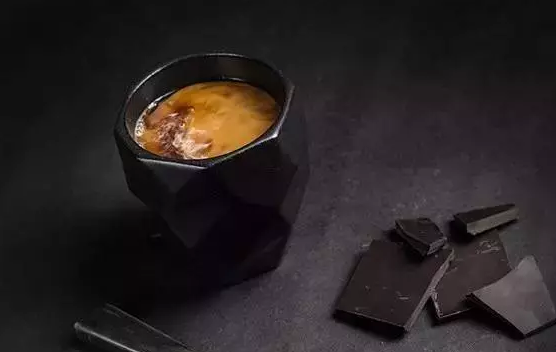The basic knowledge of coffee blending, is it baking before blending, or blending before baking?
Professional barista communication, please pay attention to coffee workshop (Weixin Official Accounts cafe_style)
Coffee from different origins needs to be put together for several different purposes. The ideal goal, of course, is to combine coffee that tastes better than any of them. But in general, Arabica coffee from a single origin is enough to make a coffee that tastes good; it has a light flavor, a soft taste and a sweet aftertaste. So there is no need for "blending"(i.e., mixing coffee from different origins).
The main commercial goal of blending coffee is to reduce costs and make coffee that tastes good from coffee that is not good. in ord to increase sales profit. Another possible goal is to create a unique flavor, the unique flavor of a brand. Customers who like this taste will have to go to this manufacturer to buy, and cannot get it from other suppliers. Another advantage of this is that the blend will not change in taste, regardless of how the coffee tastes in certain regions of the year.

We will ignore other possible commercial purposes here and concentrate on understanding the blending aimed at improving the taste quality of coffee.
Before mixing any coffee, first understand the flavor characteristics of each coffee, and at least know in your mind that the coffee you want to mix will taste like no single coffee can achieve. It would be a shame if the blend didn't taste better than one or more of them. It's better not to match. If you use some reasonably good quality coffee to make the blend, the result is likely to be this way.
A typical coffee blend does not have to use more than five coffee beans. Because if there are too many types of coffee beans, the situation can be very complicated. Almost only a very special expert would not be confused by so many different coffee beans.
Today, I will take out this hidden matching bean and share it with you. Some blended beans are not necessarily only fixed in the range of Italian style, but also can be displayed with other appliances. By blending several coffee beans with different characteristics, rich flavors that cannot be reflected in a single manor can be created. Although the beans of a single manor are delicious and excellent, they will inevitably feel a little monotonous after drinking too much and for a long time. It is like drinking coffee from a single manor as if it is eating meat every day. Although the meat is delicious and delicious, it will be monotonous if it is eaten only. With vegetables, you can make a meal more delicious and charming.
In addition to selling coffee beans from specific farms or regions (i.e., single-farm coffee beans or single-region coffee beans), local exporters also sell blended beans made up of several coffee beans. Therefore, this is a kind of beans that have been mixed well since they were obtained from raw beans. Because of the good quality of beans, I want to take into account both hand brewing and Italian brewing in baking.
Mixed beans: Colombia, Honduras, Tanzania
Degree of baking: medium deep baking
Cup Test Record:
Using a bean grinder model Baratza ForteBG, scale 3B
Powder 8.5g Extraction water temperature 94℃ Extraction volume 150ml
Aroma: ★★★★★ ★ ★
Thickness: ★★ ★★
Aftertaste: ★★★★
Bitterness: ★ ★
Sweetness: ★★ ★☆
Acidity: ★ ★
The dry and wet aromas are not too thick, the sour aromas are soft, the nutty taste is obvious, the mellow degree is high, the bitterness appears in the latter part, and soon it will disperse, and the chocolate aftertaste lasts.

Flavor: Smoke, nuts, cream, chocolate
Bake before blending, or blend before baking?
A lot of people ask me, do I bake first and then mix, or do I mix first and bake? Which way is better?
If you have a definite recipe, of course the easiest way is to mix the different coffee beans first and then roast them together. But if you're trying and comparing different blends and ratios, you'd want to roast the beans before you try anything. Otherwise, every time you change the ingredients and proportions, you'll need to bake again.
For "Melange" blends and small test blends, it is more suitable for independent roasting. For example, when a small amount of "roaster coffee" needs to be added to a trial mix, the desired "roaster coffee" is best for independent roasting.
Some coffees are denser or vary in volume before and after roasting, and these beans are roasted differently than "washed" Arabica coffee. Arabica coffee processed by the "drying method" is roasted at a relatively high temperature. But in most cases, various coffee beans can be roasted together.
My advice: generally all coffee beans can be roasted together. Consider baking independently only when baking results are not ideal. At this time independent baking can usually achieve better results. Especially for roller roasters, a relatively moderate baking degree can generally be found.
But some single-origin coffee beans are also not easy to roast evenly. For example, Yemeni coffee, Ethiopian DP coffee beans, etc. An uneven roast color is not a defect; only "washed" Arabica coffee needs to be roasted evenly.

Important Notice :
前街咖啡 FrontStreet Coffee has moved to new addredd:
FrontStreet Coffee Address: 315,Donghua East Road,GuangZhou
Tel:020 38364473
- Prev

Description of flavor and aroma of G2 coffee washed by Adulina Yegashev
For professional baristas, please follow the coffee workshop (Wechat official account cafe_style) [Adulina Yegashev G2 ADULINA Ethiopia Yirgacheffe G2] * Product introduction / Yegashev Yirgacheffe Ethiopia's most famous coffee producing area, the bean shape is long and oval, the average altitude is between 1850 and 2400, and the annual rainfall is 1300mm.
- Next

Italian coffee blending experience, drip coffee blending, decaf coffee how to mix?
The blending experience of Italian coffee, the blending of dripping coffee, the blending of decaf coffee: the most helpless blend of Melange coffee is the blending of Vienna coffee (Vienna Coffee). The beans in this blended coffee are roasted to different degrees, so each kind of coffee has to be roasted independently. Especially if you want to have the carbon in deep baking at the same time, and more
Related
- Detailed explanation of Jadeite planting Land in Panamanian Jadeite Manor introduction to the grading system of Jadeite competitive bidding, Red bid, Green bid and Rose Summer
- Story of Coffee planting in Brenka region of Costa Rica Stonehenge Manor anaerobic heavy honey treatment of flavor mouth
- What's on the barrel of Blue Mountain Coffee beans?
- Can American coffee also pull flowers? How to use hot American style to pull out a good-looking pattern?
- Can you make a cold extract with coffee beans? What is the right proportion for cold-extracted coffee formula?
- Indonesian PWN Gold Mandrine Coffee Origin Features Flavor How to Chong? Mandolin coffee is American.
- A brief introduction to the flavor characteristics of Brazilian yellow bourbon coffee beans
- What is the effect of different water quality on the flavor of cold-extracted coffee? What kind of water is best for brewing coffee?
- Why do you think of Rose Summer whenever you mention Panamanian coffee?
- Introduction to the characteristics of authentic blue mountain coffee bean producing areas? What is the CIB Coffee Authority in Jamaica?

